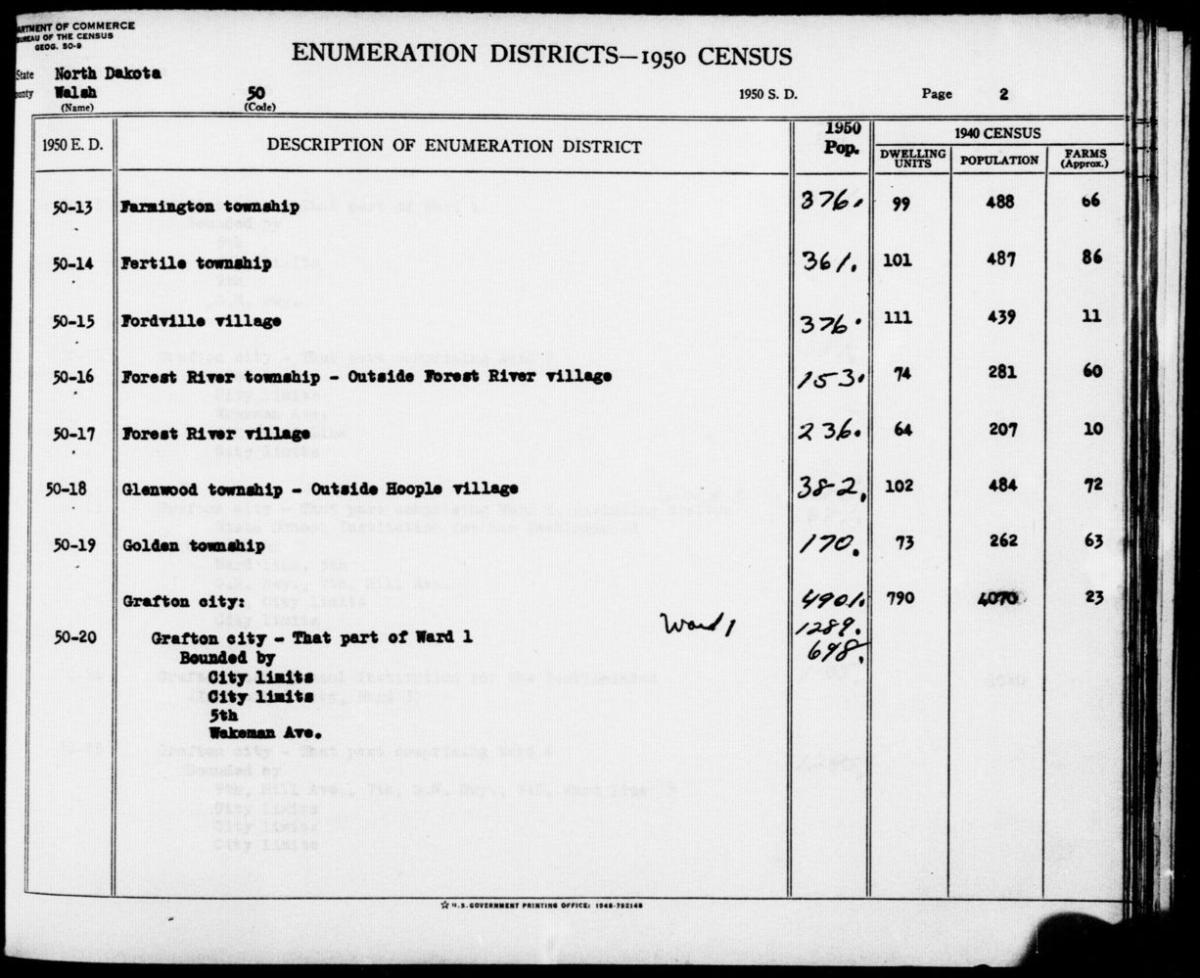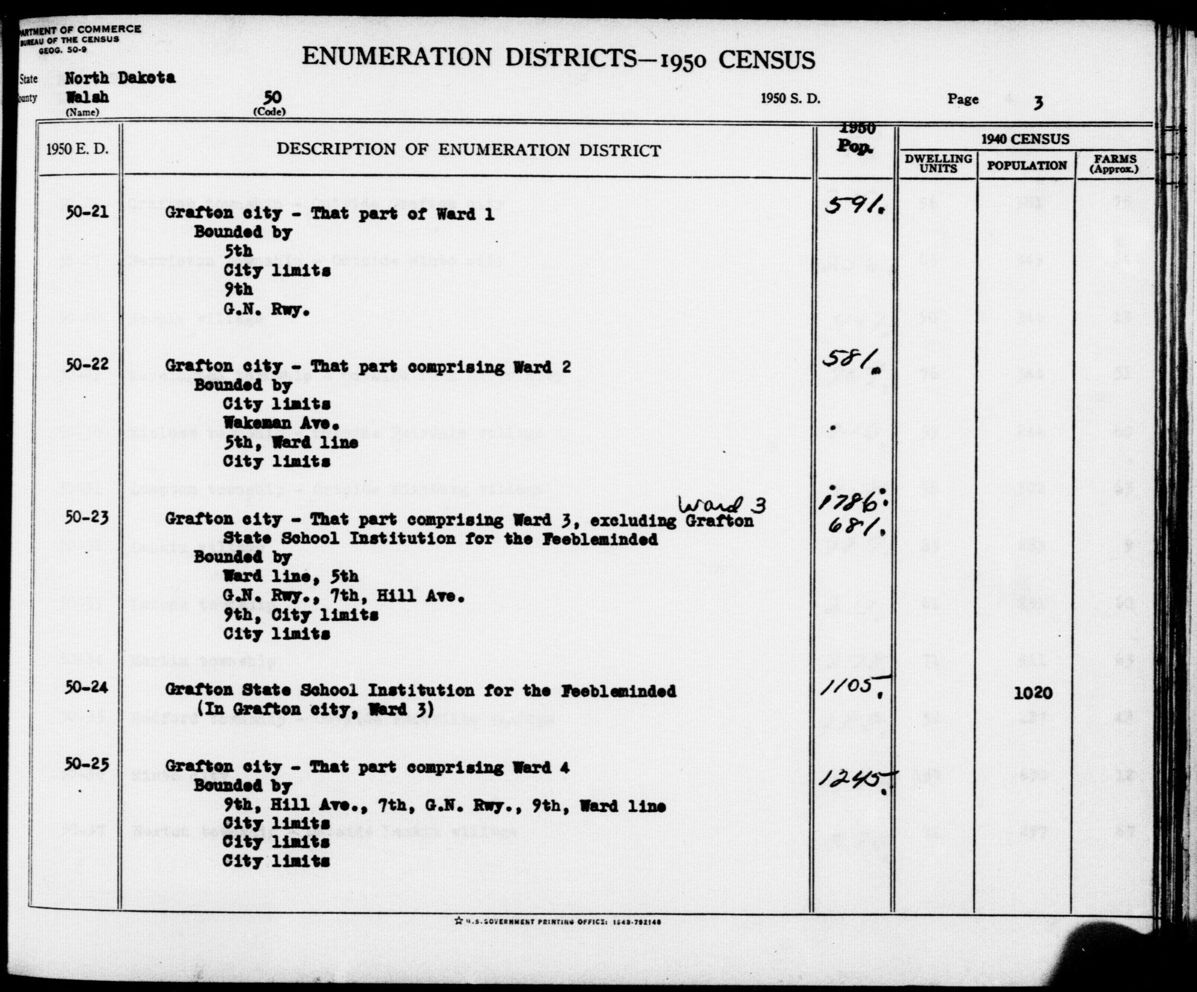
Census Statistics
We are often asked where various kinds of census statistics can be found. This web page will help you get started on your quest.
Published Volumes
Published volumes (books) of aggregated census statistics for 1790 to 2020 can be found on the Census Bureau's website. Go to "more" on the timeline that starts with 2020 to choose an earlier census year. The published volumes typically include statistical information by state, county, and Statistical Metropolitan Areas (since 1950). These publications rarely break down the statistics at small community levels.
Digital Statistics
Census statistics, 1790–2010, are digitally searchable at IPUMS USA. Level of available detail varies.
NARA’s Electronic Records Division has electronic data that includes statistical compilations such as the County and City Data Book Files, 1944–1988 (National Archives Identifier 625278). There are also detailed tabulations from the 1970 through 2010 decennial censuses described in the Electronic Records Reference Reports. Note that a number of the 1970 Census Summary Statistics files are available for download from the National Archives Catalog; please refer to the "Download" links in the Statistics from 1970 Census of Population and Housing Electronic Records Reference Report.
The Census Bureau's data website contains data from 2000 to 2020.
Minor Civil Division Population Figures
The population of Minor Civil Divisions (MCDs) for some census years can be found in descriptions of census Enumeration Districts (EDs) that were written by the Geography Division of the Bureau of the Census and its predecessors. MCDs are political units below the county level. For example, the written description of the 1950 EDs includes both population totals for the 1940 and 1950 censuses, as shown in the image below for EDs in Walsh County, ND. In the first image, note that Grafton city data is given for 1950 (4901) and 1940 (4070). The 1950 total for Ward 1 is shown (1289) followed by the total for ED 50-20 (698), which was only part of Ward 1. In the second image, we see similar data for the rest of Ward 1 and Grafton's other wards and EDs.
| 1950 Census ED Descriptions with 1940 and 1950 Population Data, Walsh County, ND, page 2 | 1950 Census ED Descriptions with 1940 and 1950 Population Data, Walsh County, ND, page 3 |
|---|---|
 |
 |
Enumeration District descriptions that include population data are as follows:
Available at FamilySearch.org:
- 1830 ED descriptions include population numbers from the 1830 census.
- 1840 ED descriptions include population numbers from the 1840 census beginning at image 157.
- 1900 ED descriptions included population numbers from the 1900 census population numbers are in the column with the ED description.
- 1910 ED descriptions include population numbers from the 1910 census.
- 1920 ED descriptions include population numbers from the 1920 census.
- 1930 ED descriptions include population numbers from the 1920 and 1930 censuses.
Available in the National Archives Catalog:
Available at NARA’s Official 1950 Census Website:
Housing Statistics
Housing statistics are sometimes available for areas as small as a city block. For example, the Census Bureau published block-level information about dwellings for 213 cities from data collected during the 1950 census. For more information, see "1950 Census Block Housing Information Is Available For 213 Municipalities."
Creating Your Own Dataset
Researchers are often interested in ethnic, racial, or other population characteristics of a Minor Civil Division. However, published reports typically consist of aggregated statistical data at the census tract, county, or state level, so they may not provide the level of desired detail.
Sometimes researchers may have to compile their own data. For example, "Hispanic" origin or descent was not a separate category until the 1970 census. See questions asked on the various censuses.
- The 1970 census only asked a sample of persons if they were of Mexican, Puerto Rican, Cuban, Central or South American, or other Spanish origin.
- The 1980 and 1990 censuses asked all persons if they were of Spanish or Hispanic origin or descent.
- The 2000 and 2010 census asked if the person was Spanish/Hispanic/Latino.
- The 2020 census asked (with check boxes) if the person was of Mexican, Mexican American, Chicano, Puerto Rican, or Cuban origin. If the person had a different Hispanic, Latino, or Spanish origin, such as Salvadoran, Dominican, Columbian, Guatemalan, Spaniard, Ecuadorian, and so forth, they were to write that in the space provided, as shown on the form.
As a result of the above, persons interested in statistics of Hispanic inhabitants of a particular Minor Civil Division prior to 1970 may need to compile their own data by going through the publicly-available census schedules (1790–1950) for the particular location to compile lists or statistics of Hispanics living there in each census year. Census schedules showing information for individual persons for the 1960 and later censuses are not publicly accessible due to a 72 year restriction on public access to protect people's privacy.
Where to Get Help Accessing and Understanding Census Data
These agencies can help you locate and understand census data:
- State Data Centers organize a statewide network of coordinating and affiliate agencies that work in partnership with the Census Bureau for data dissemination at the local level. Their personnel are knowledgeable about available data and where to find it.
- Census Depository Libraries (CDL) receive Census Bureau publications, CD-ROMs, and information, and provide the public with local no-fee access and assistance in using the information. CDLs are located across the country in metropolitan statistical areas served by a Federal Depository Library (FDL).
- Census Academy provides in-depth courses, webinars, and tutorials on how to access and use census data.
We hope this web page provides useful guidance on how to begin your own census statistics research.